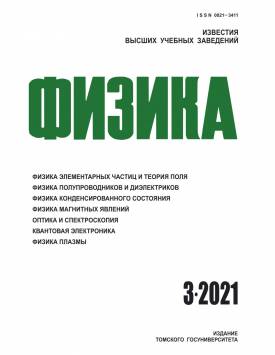Optimized design of wiring scheme for conductive layer in bending area of FOLED
In order to solve the problem of wiring breakage in conductive layer caused by fold in bend area of FOLED and improve the efficiency of conductive layer in bend area of FOLED, the wiring scheme of conductive layer in bend area of FOLED is optimized. First of all, the polymer substrate FOLED samples are prepared, and the bending area structure is formed by stacking resin, pin, metal wires and other layers. The equivalent working condition of bending process is analyzed, and the three-dimensional finite element modeling of the bending area of FOLED is completed. According to the simulation analysis results of bending area of FOLED, it is proposed that the optimal design of Resin ply thickness is: the limiting conditions of material damage in conductive layer should be fully considered, and the material damage mechanism should be studied to ensure that the cumulative plastic strain of A-A and B-B positions is smaller at the same time without damage; the optimal design of wiring scheme for conductive layer is: using the square of optimal stress distribution to reduce the fracture angle, and the routing scheme of crossing route type > full filling type> internal opening type should be adopted.
Keywords
FOLED,
bending area,
conductive layer,
finite element modeling,
wiring schemeAuthors
| Liang Ma | Jiangsu University | maliang72@163.com |
| Jinan Gu | Jiangsu University | gujina2013@163.com |
Всего: 2
References
Huan L., Xin J.L., and Xing B.C. // IEEE. Trans. Electron. Devices. - 2018. - V. 48. - P. 1-5.
Zhamaletdinov A.A., Velikhov E.P., and Shevtsov A.N. // Dokl. Earth. Sci. - 2017. - V. 474. - P. 641-645.
Kim T., Lee K.H., and Lee J.Y. // J. Mater. Chem. C. - 2018. - V. 72. - P. 88-91.
Peng W., Zhang J., and Lei D. // Chem. Mater. - 2017. - V. 29. - P. 112-118.
Ma L.L., Yang L., and Zong H.C. // Chemelectrochem. - 2017. - V. 4. - P. 1443-1449.
Cao R.R., Liu S., and Liu Q. // IEEE. Electron. Dev. Lett. - 2018. - V. 38. - P. 1371-1374.
Gruber M., Müller A., and Jovanov V. // IEEE J. Photovoltaics. - 2017. - V. 39. - P. 1-8.
Liu H.Y., Liu G.J., and Huang R.C. // IEEE. Sensors. J. - 2017. - V. 17. - No.16. - P. 5087-5092.
Jin X., Sendek A.D., and Cubuk E.D. // Acs. Nano. - 2017. - V. 11. - P. 19-70.
Yan R., Ma X.J., and Liang Y.Z. // J. China Acad. Electron Inform. Technol. - 2017. - V. 12. - P. 7-13.
Pan L., Wang H.C., and Chu M.Y. // J. Pow. Supply. - 2019. - V. 17. - P. 140-147.
Xia K., Fu X.L., and Li Z.R. // Chin. J. Pow. Source. - 2019. - V. 43. - P. 116-119.
Qu J.J. // Autom. Instrum. - 2017. - V. 15. - P. 226-227.
Sa R.N. // J. Jilin Univ. (Sci). - 2017. - V. 55. - P. 180-184.
Li Y.Y., Liang K.F., and Yuan Z.Y. // Comput. Simul. - 2017. - V. 34. - P. 55-62.
Brown T.S., Du S., Eruslu H., and Sayas F. // Appl. Math. Nonlinear Sci. - 2018. - V. 3. - P. 55-96.
Fernández-Pousa C.R. // Appl. Math. Nonlinear Sci. - 2018. - V. 3. - P. 23-32.
Xiong Z., et al. // Multimed Tools Appl. - 2019. - V. 78. - No. 22. - P. 31035-31055.
Khellat F. and Khormizi M.B. // Appl. Math. Nonlinear Sci. - 2018. - V. 3. - P. 15-22.
Lakshminarayana G., Vajravelu K., Sucharitha G., and Sreenadh S. // Appl. Math. Nonlinear Sci. - 2018. - V. 3. - P. 41-54.
Bozduman H.C. and Afacan E. // Appl. Math. Nonlinear Sci. - 2020. - V. 5 (1). - P. 479-484.
Gao N., Hou H., and Wu J.H. // Int. J. Mod. Phys. B. - 2018. - V. 32. - No. 20. - P. 1850005.
Gao N., Hou H., Zhang Y., et al. // Mod. Phys. Lett. B. - 2018. - V. 32. - No. 4. - P. 1850040.
Ruiz-Fernandez J.P., Benlloch J., Lopez M.A., et al. // Appl. Math. Nonlinear Sci. - 2019. - V. 4. - No. 1. - P. 21-34.
